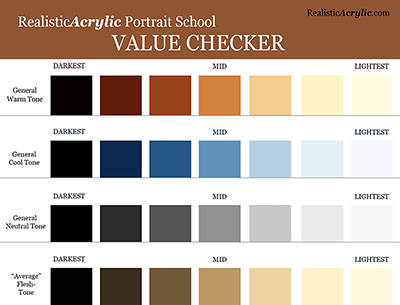Archive Monthly Archives: March 2020
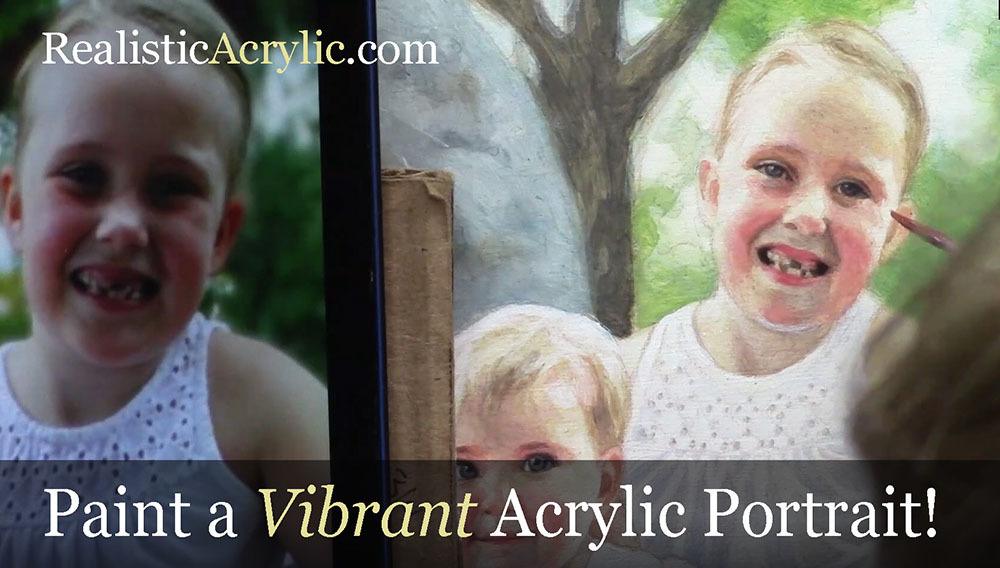
Step-by-Step Journey of Painting a Vibrant Acrylic Portrait
How do you paint an acrylic portrait that looks alive?
In this video, I share how I painted an 11″ x 14″ portrait of three beautiful children, using the classical glazing technique.
This is not a time-lapse video, but rather real-time snippets of my studio process, step-by-step, with explanations of what I’m doing. I share all the tips I can within about 20 minutes so that you can learn to paint an amazing acrylic portrait that you can give as a gift or even do for a living!
This tutorial shows the entire process of painting a portrait. Here are the steps I show in this tutorial:
- Sketch the portrait.
- Seal in the sketch.
- Block in the initial values
- Develop contrast, depth, and skin tones
- Add final nuances, details and finish.
Watch the video below and happy painting! 🙂
Of course, I always love to hear from you. Please let me know how this video helps.
Also, do you have a question about your portrait that I could answer for you? Let me know in the comments below!
Yours for Better Portraits,
![]()
If you found this post helpful or encouraging, would you send it on ahead? Let others know with the share buttons below. I’d love to hear your comments. Thank you so much!
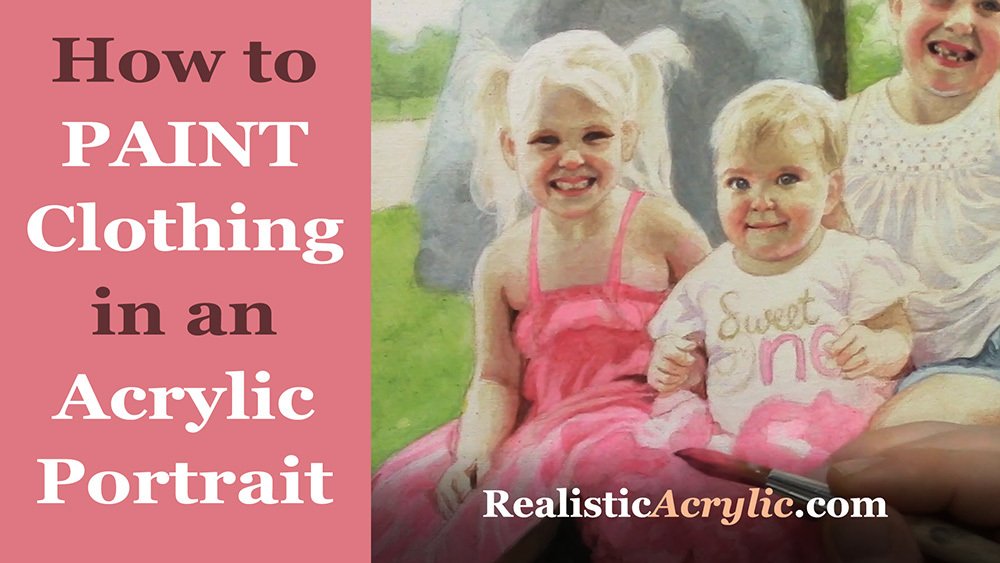
How to Paint Clothing in an Acrylic Portrait
How do you paint clothing in an acrylic portrait so it looks realistic?
As portrait artists, we give attention to many things—an accurate likeness, lifelike facial features, spot-on skin tones, that we often forget a vital part of a good painting: realistic clothing. Being able to paint clothing well can really make or break your portrait.
In this video tutorial, I’m going to show you how to use the precise placement of layers to mimic the look of folds in fabric. I’ll show you what colors to use for shadows, mid-tones and highlights and why.
For this particular demo, I am using an 11 x 14 acrylic portrait I did of three children as an example. One girl has a very detailed pink dress that creates complex and interesting shapes within the shadows. That’s what we will be painting today.
Have you found any techniques for painting clothing realistically in acrylic? Let me know below, in the comments!
I hope you found this tutorial helpful. Please visit again and I’ll be sharing more useful acrylic portrait painting tips with you!
Look forward to sharing more tips and tutorials with you.
Yours for Better Portraits,
![]()
If you found this post helpful or encouraging, would you send it on ahead? Let others know with the share buttons below. I’d love to hear your comments. Thank you so much!
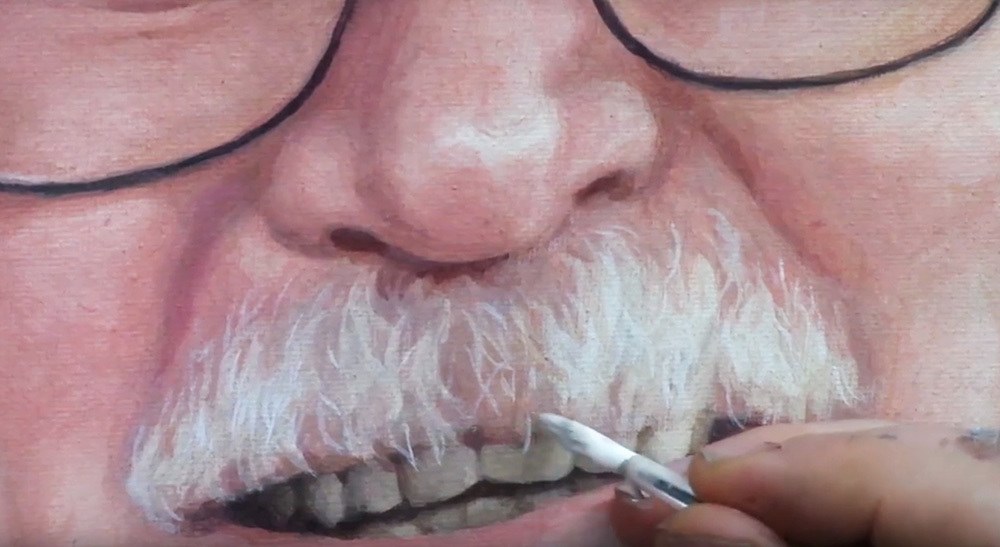
How to Paint a Mustache in an Acrylic Portrait
Painting mustaches, beards, hair of any kind of acrylic painting can be tricky.
Capturing facial hair accurately is a very important part of making your portrait look realistic. Let me show you how to add detail to a mustache in an acrylic portrait in this quick video tutorial.
Let me know, in the comments, how this video helps!
What techniques have YOU used to paint mustaches and facial hair in your acrylic portrait?
Look forward to sharing more tips and tutorials with you.
Yours for Better Portraits,
![]()
If you found this post helpful or encouraging, would you send it on ahead? Let others know with the share buttons below. I’d love to hear your comments. Thank you so much!
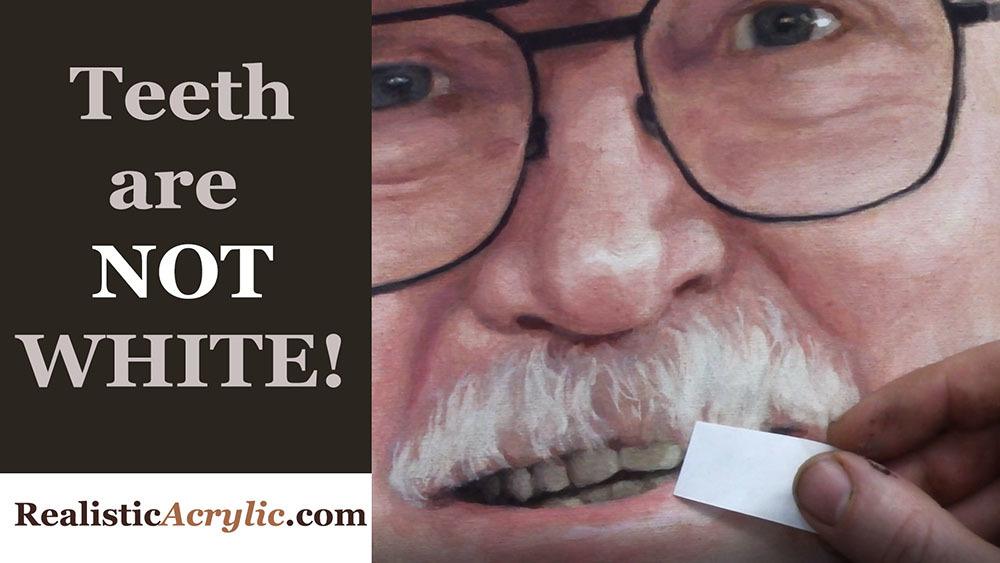
Why You Shouldn’t Paint Teeth White in Your Acrylic Portrait
Let me show you how to instantly improve your acrylic portrait by changing one little thing.
Don’t paint the teeth white.
When I critique portraits for beginning artists, one of the things I often see is teeth that are white. It detracts from the realism. Let me show you why in this super quick video…
As you can see, teeth are darker value, and you can often achieve it by using a mixture of raw umber and titanium white for the shadows, raw sienna-titanium white for the mid-tones and titanium white-slight bit of indian yellow only for the highlights.
It all comes down to painting correct tonal value–that is, the correct level of light and dark. If you’d like a tool to help you with that, then I have something for you…
I created a tool that you can use to measure the tonal value of any area of your portrait in question against your reference photo. I call it the “Value Checker.” Download and print a copy for yourself today and apply it to the portrait you are currently working on. And you will see an immediate improvement in the realism!
Get the full-resolution 8 1/2″ x 11″ version below…
Get the Value Checker ToolLet me know how this helps! What did you think of this tip on NOT painting teeth white? Did it surprise you?
I’d love to hear how your art journey is going. Shoot me an email and let me know. Or leave a comment. Be blessed in your portrait painting!
Yours for Better Portraits,
![]()
Matt
If you found this post helpful or encouraging, would you send it on ahead? Let others know with the share buttons below. I’d love to hear your comments. Thank you so much!

